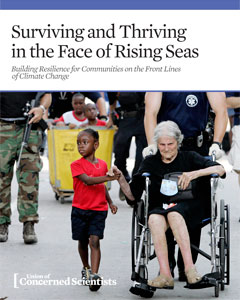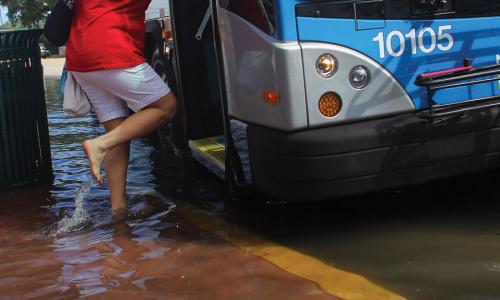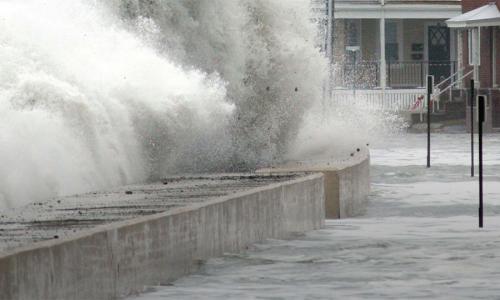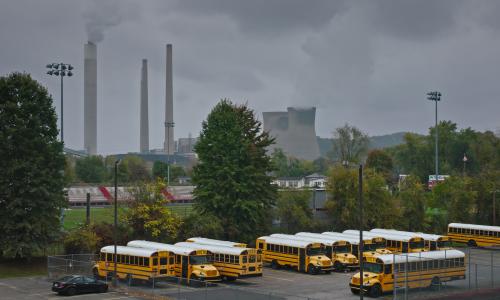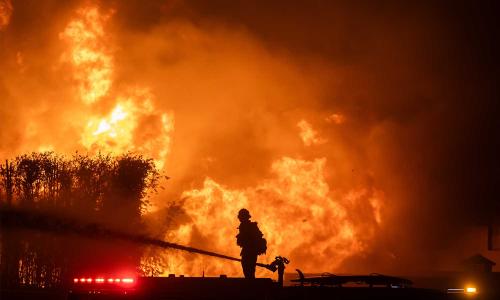Sea levels are rising as global warming heats up the planet. The risks of tidal flooding and storm surge have grown significantly. In the U.S., sea levels are rising fastest along the East Coast and Gulf of Mexico.
The growing consequences of climate change threaten communities up and down the U.S. coast. But some communities are particularly vulnerable due to a combination of climate and socioeconomic risks.
Federal and state agencies should prioritize those communities most at risk in order to better—and more equitably—prepare the country for a world of rising seas.
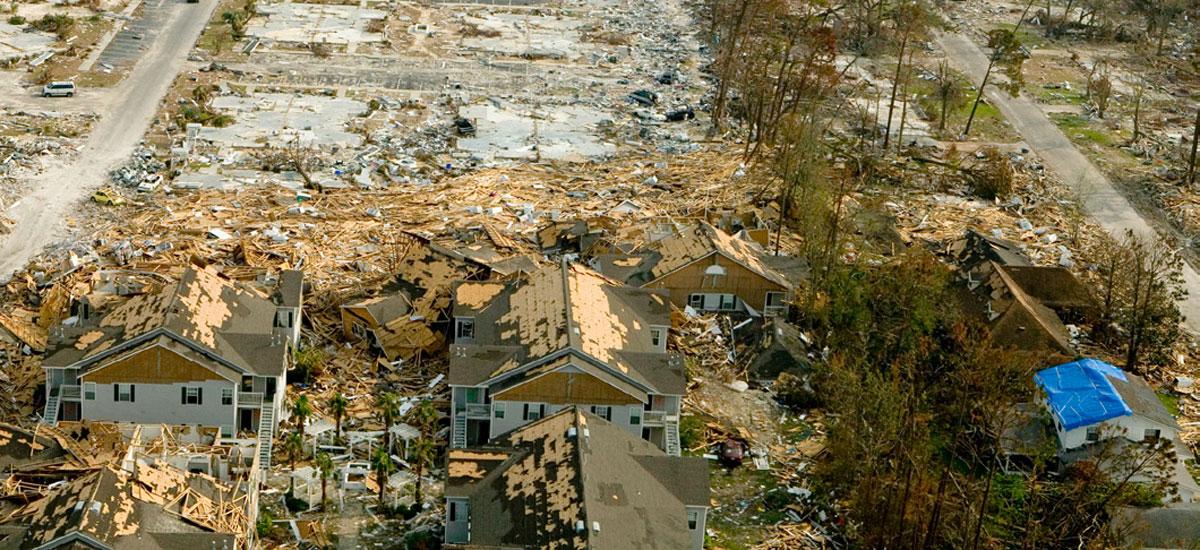
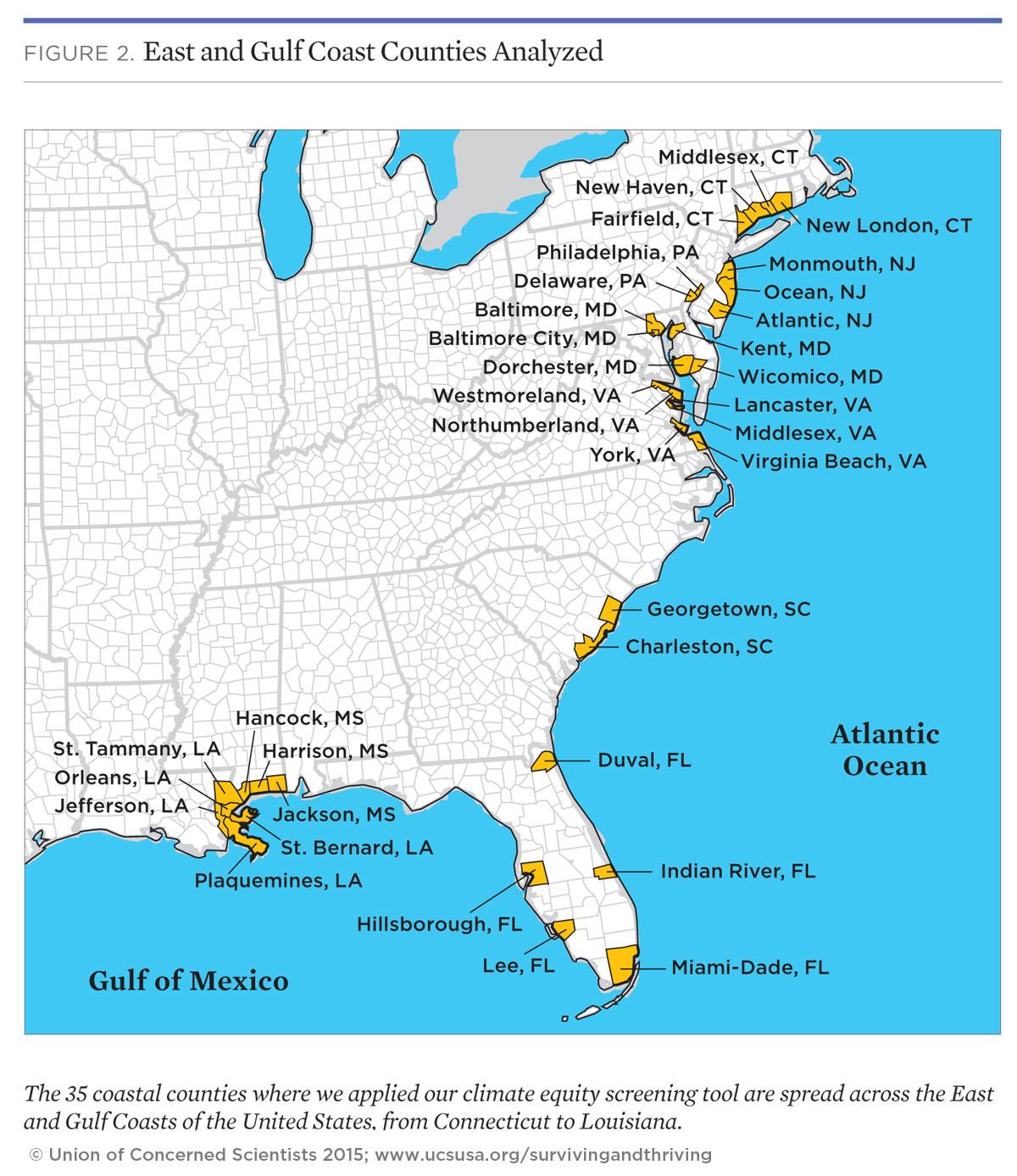
Communities on the front lines of climate change
This analysis uses a new screening tool to identify "climate equity hotspots," or locations where climate and socioeconomic factors combine to create heightened risks.
Thirty-five coastal counties in nine East and Gulf Coast states were evaluated. Exposure to climate risks—from projected sea level rise and tidal flooding—was determined for each area.
Locations were also evaluated for socioeconomic risk factors—including poverty, per capita income, educational attainment, and share of minority population—that pose special challenges to their ability to prepare and recover from disasters.
The results (see graphic below) highlight the relative joint risks of climate and socioeconomic factors at a county level.
Case studies for five of these locations further highlight some of the challenges faced by these communities.
Case studies in coastal climate equity challenges:
Dorchester County, MD | Charleston, SC | Opa-locka and Hialeah, FL | Gulfport, MS | Plaquemines Parish, LA
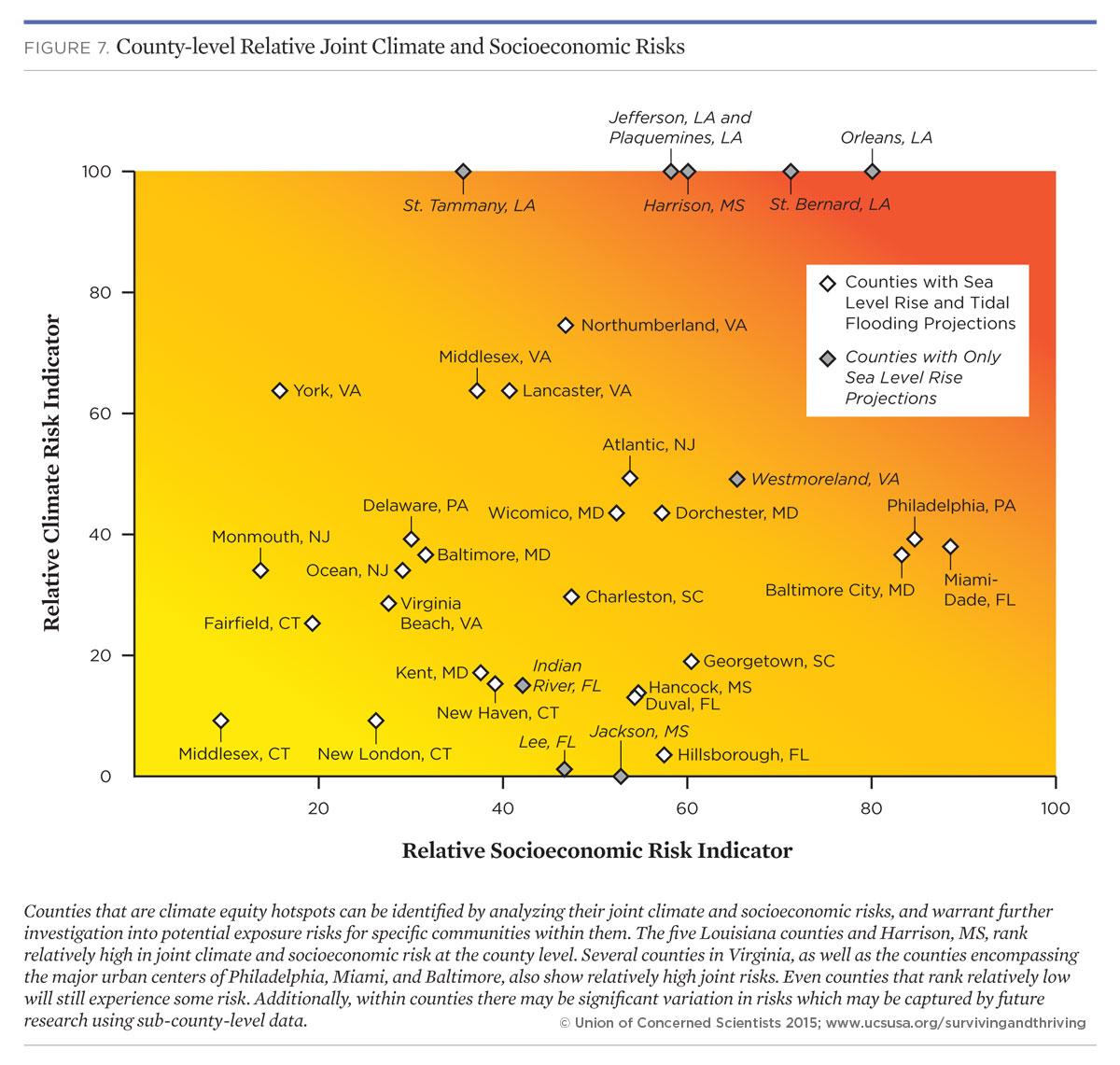
Creating an equitable framework for community resilience
Our nation's disaster aid, recovery efforts, and investments in climate resilience need to better correspond to individual communities' risks and current level of preparedness, and should meet the needs of those most at risk.
The guiding principal for our recommendations is a commitment to providing communities equitable access to the resources and know-how they need to make choices about their future in a world of rising seas. Communities on the front lines of climate change should have a direct voice in shaping their future.
Recommendations include:
- Federal, state, and local agencies should target funding for preparedness and disaster recovery to communities most at risk.
- Policy makers should direct investments in transportation, energy, health, and shelter to meet the needs of populations at heightened risk.
- The federal government should mandate and enable the use of the best-available actionable science, data, mapping, and tools.
- Congress should increase funding for climate resilience.
- The United States should work with other nations to cut carbon emissions.
Fairness, justice, and equity go to the heart of what a true democracy like ours stands for. As a nation, we need to bring those principals to bear as we work together to confront the consequences of climate change.
Case studies in coastal climate equity challenges
These examples highlight five communities along the U.S. East and Gulf Coasts that face growing threats from sea level rise and storm surge and require a more equitable response to their preparedness and planning needs.
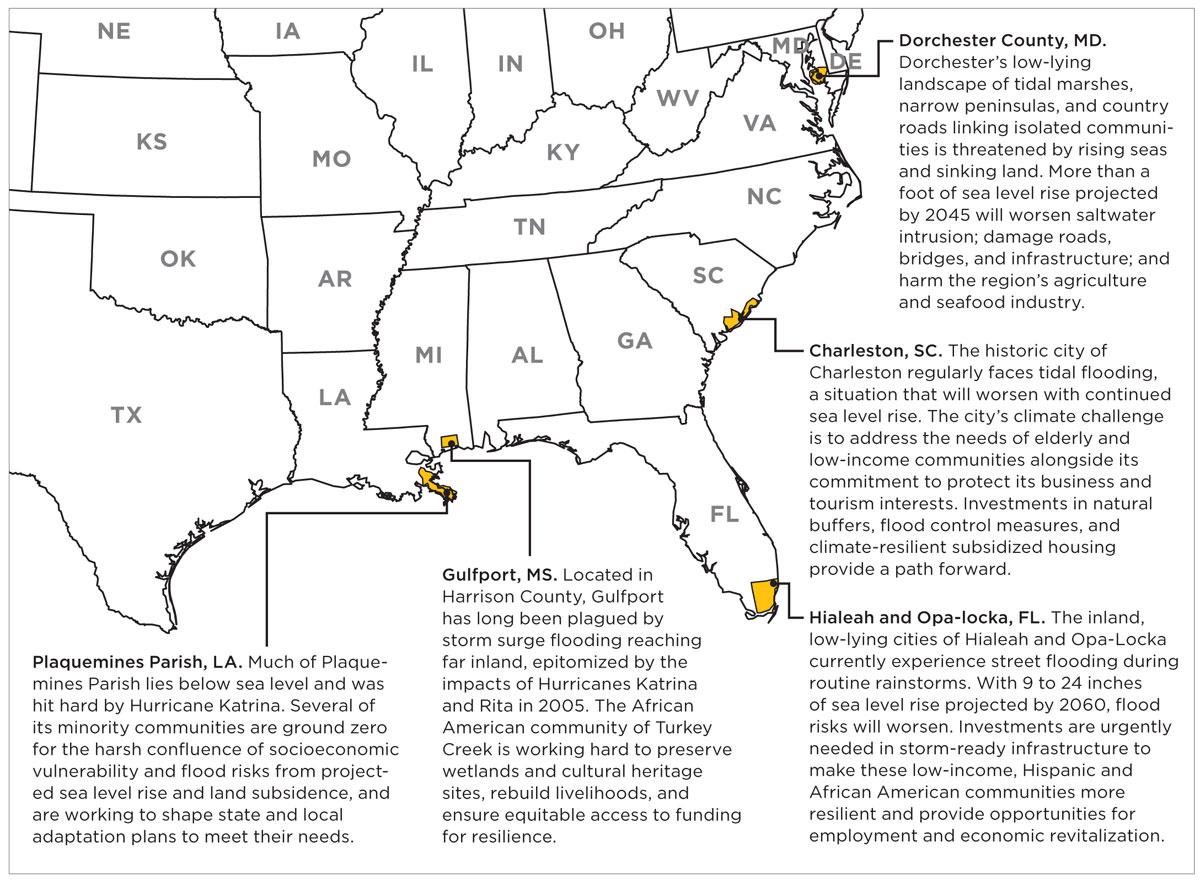
Learn more about these communities:
- Dorchester County, MD: Historic, Isolated Communities at Risk
- Charleston, SC: Historic City at Risk of Flooding
- Opa-locka and Hialeah: Two Florida Communities Grappling with Decades of Storm Impacts
- Gulfport, MS: A Struggle Against Flooding and Environmental Injustice
- Plaquemines Parish, LA: Sinking Lands and Rising Seas Mean Tough Choices
